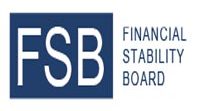The Financial Stability Board has released a consultative document, “Standards and Processes for Global Securities Financing Data Collection and Aggregation.” Most of this is no surprise and the actual data elements were expected, but there are some twists and turns in the road to good results. We highlight the issues most likely to cause trouble for both market participants and regulators.
This is the first serious publication that details how the FSB wants to track lending, positions, collateral and counterparties in the securities financing industry. The FSB has provided some good definition around the two components for reporting, flow data and position/stock data. Here are the issues we see:
1) Exemptions
Our biggest concern is the multiple exemptions suggested in the document, for example no need for reporting under some defined minimum transaction size. Another exemption is for central banks:
Transactions executed with central banks are excluded from the data reporting scope as well as internal deals within the same legal entity. Intra-group transactions between different legal entities (banks or other subsidiaries) should be included.
Why exclude central banks? That seems like a really bad idea. Is this a similar exemption like allowing government entities to not post collateral on CCPs? While central banks may argue for their anonymity, our response is, tough luck. Central banks are intricately involved in financial markets on all levels. Keeping their data out of the pool muddies the outcome. Likewise, one-off national regulators exempting specific counterparty types of loan sizes creates an ineffective result. Either collect the data or don’t. Doing anything else just produces unreliable data.
2) Economically equivalent transactions
Common definitions of securities financing transactions such as repo, securities lending and margin lending are needed to ensure that the vast majority of these transactions are captured, irrespective of the local trading practices (for example, where repos are executed as buy/sell backs), and without introducing errors due to inconsistencies in the way data are reported by different jurisdictions.
Our question is who will make this common definition? Would a Total Return Swap against a FTSE 100 basket that is basically an ETF short be an equivalent transaction? How about Secured Funding Futures that are economic equivalents to repo when paired with the underlying?
3) Double counting
Assuming that at least FSB member jurisdictions will provide the data, a two-side reporting scheme, where both counterparties report the trade, would maximise the data collection coverage…. However, collecting data from both parties of securities financing contracts introduces double-counting as data from the same transaction could be reported twice.
This will be an important issue to resolve. Already double counting is problematic in government surveys. The FSB is leaving it to national authorities to eliminate double counting; we’re not sure this is a great idea. The securities lending vendors will have smart advice on how to sort this out. We think the final solution has already been proposed by the FSB:
Reporting entities are required to report data by individual transactions that include the counterparty identifiers to the national/regional aggregator.
This is basically a LEI code for securities finance.
4) Who sees the data
The FSB, in coordination with the reporting authorities, could also develop summary tables to facilitate periodic reporting of the information (public or restricted) to all authorised parties. The FSB will also develop rules for responding to ad-hoc requests for information. Some aggregate-level data could be regularly made public by the FSB.
We expect these figures to be the subject of great market scrutiny, especially in the first months or years of publication.
5) Who sends in the data?
The FSB wants regulators to “have access to at least three main sources for the data elements…”
(i) Bilateral counterparties in a trade (reporting entity, as defined in “3.3 Sector of the reporting entity” in Table 3);
(ii) Tradingvenues,securitiessettlementsystems,CCPsandtri-partyagents;and
(iii) Trade repositories (TRs), which would provide the authorities with access to transaction level data provided by counterparties.25
The three approaches are not mutually exclusive and which source or sources are preferred may depend on the market structure and the contract type.
This is going to take a long time to get sorted out in many countries. Its easily a multi-year process to get data collection, aggregation, eliminate double counting and consistent reporting all correct.


